new posts in all blogs
Viewing: Blog Posts Tagged with: FIFA, Most Recent at Top [Help]
Results 1 - 8 of 8
How to use this Page
You are viewing the most recent posts tagged with the words: FIFA in the JacketFlap blog reader. What is a tag? Think of a tag as a keyword or category label. Tags can both help you find posts on JacketFlap.com as well as provide an easy way for you to "remember" and classify posts for later recall. Try adding a tag yourself by clicking "Add a tag" below a post's header. Scroll down through the list of Recent Posts in the left column and click on a post title that sounds interesting. You can view all posts from a specific blog by clicking the Blog name in the right column, or you can click a 'More Posts from this Blog' link in any individual post.

By: Kathleen Sargeant,
on 12/28/2015
Blog:
OUPblog
(
Login to Add to MyJacketFlap)
JacketFlap tags:
Earth Day,
ISIS,
International Criminal Court,
al-Bashir,
FIFA,
*Featured,
international law,
geneva convention,
London School of Economics,
Online products,
public international law,
Max Planck Encyclopedia of Public International Law,
American Society of International Law,
refugee law,
European Society of International Law,
Oxford Historical Treaties,
Charlie Hebdo,
Robert Cryer,
refugee crisis,
Human Rights Month,
Association of Southeast Asian Nations,
Jan Klabbers,
Joseph Weiler,
Judith Butler,
world refugee day,
South China Sea,
Books,
Law,
Journals,
Add a tag
It's been another exciting year for international law at Oxford University Press. We have put together some highlights from 2015 to reflect on the developments that have taken place, from scholarly commentary on current events to technology updates and conference discussions.
The post International law at Oxford in 2015 appeared first on OUPblog.

By: PennyF,
on 7/13/2014
Blog:
OUPblog
(
Login to Add to MyJacketFlap)
JacketFlap tags:
Germany,
Geography,
World,
atlas,
Europe,
World Cup,
Atlas of the World,
FIFA,
Social Sciences,
*Featured,
oxford’s atlas,
Sports & Games,
country facts,
fifa host,
markin,
klaproth,
attesting,
Books,
History,
Add a tag
Today is the conclusion of the 2014 FIFA World Cup, and our highlights about the final four competing nations with information pulled right from the pages of the latest edition of Oxford’s Atlas of the World. The final two teams, Germany and Argentina, go head-to-head on Sunday, 13 July to determine the champion.
Like many of its European neighbors, Germany is a country that loves football, and is one of the most competitive football-playing nations in the world. Attesting to that is their success in the semi-finals in this year’s Cup. Here are eight interesting facts you might not have known about the country that bruised Brazil’s ego.
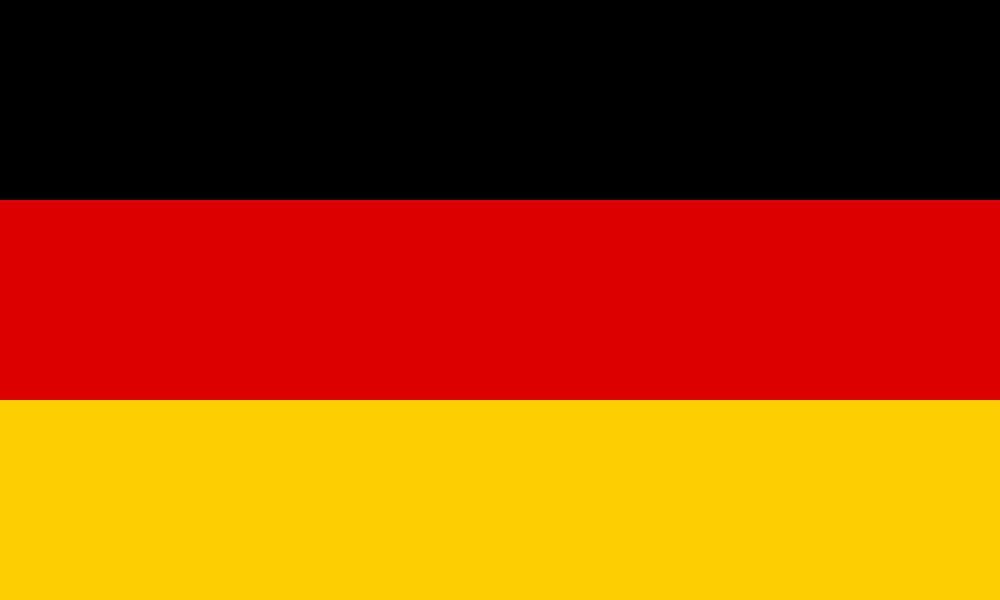
- Like FIFA host country Brazil, Germany also elected its first female leader in recent years when Angela Merkel became Chancellor in 2005.
- In addition to bringing mankind the likes of Albert Einstein and Johan Gutenberg, inventor of the first printing press in Europe, Germany provides 20.6% of the world’s motor vehicles and 17% of our pharmaceuticals.
- Uranium was first discovered by a German chemist, Markin Klaproth, in 1789 and boasts the fourth largest industrial output (from mining, manufacturing, construction, and energy) in the world.
- Germany had a rough go of things for a while after World War II with its division into East and West factions, as well as the Cold War. The two were reunited on 3 October 1990 and adopted West Germany’s official name, the Federal Republic of Germany.
- Deutschland is a leading member of the European Union as well as the 17-member Eurozone, the economic and monetary union of nations that utilize the Euro as their sole form of currency.
- In terms of religion, Germany is mostly a Protestant and Roman Catholic country with a representation of 34% of the population.
- Although a leading producer of nuclear power (Germany ranks sixth in the world for 4.1% of global production), following the 2011 Fukushima disaster, the country has begun phasing out its nuclear power production.
- Germany is a primary refugee destination, ranking first in Europe and fourth in the world after Pakistan, Iran, and Syria.
Oxford’s Atlas of the World — the only world atlas updated annually, guaranteeing that users will find the most current geographic information — is the most authoritative resource on the market. The milestone Twentieth Edition is full of crisp, clear cartography of urban areas and virtually uninhabited landscapes around the globe, maps of cities and regions at carefully selected scales that give a striking view of the Earth’s surface, and the most up-to-date census information. The acclaimed resource is not only the best-selling volume of its size and price, but also the benchmark by which all other atlases are measured.
Subscribe to the OUPblog via email or RSS.
Subscribe to only geography articles on the OUPblog via email or RSS.
Image credit: Flag of Germany. Public domain via Wikimedia Commons.
The post Countries of the World Cup: Germany appeared first on OUPblog.


By: PennyF,
on 7/12/2014
Blog:
OUPblog
(
Login to Add to MyJacketFlap)
JacketFlap tags:
Geography,
World,
Netherlands,
dutch,
atlas,
Europe,
World Cup,
Oxford Atlas of the World,
Atlas of the World,
FIFA,
Social Sciences,
*Featured,
friesland,
oxford’s atlas,
Sports & Games,
country facts,
meuse,
catarinella,
Books,
History,
Add a tag
As we gear up for the third place finalist match of the 2014 FIFA World Cup today — the Netherlands face the host country Brazil — we’re highlighting some interesting facts about one of the competing nations with information pulled right from the pages of the latest edition of Oxford’s Atlas of the World. Germany (tomorrow’s country highlight) and Argentina go head-to-head on Sunday, 13 July to determine the champion.
The Netherlands, located in the western end of Northern Europe is widely known for its rich Dutch culture. The population is 83% Dutch, with a smaller percentage made up of Indonesian, Turkish, and Moroccan ethnicities. The nation has two official languages: Frisian, spoken mainly by inhabitants of the northern province of Friesland, and Dutch.
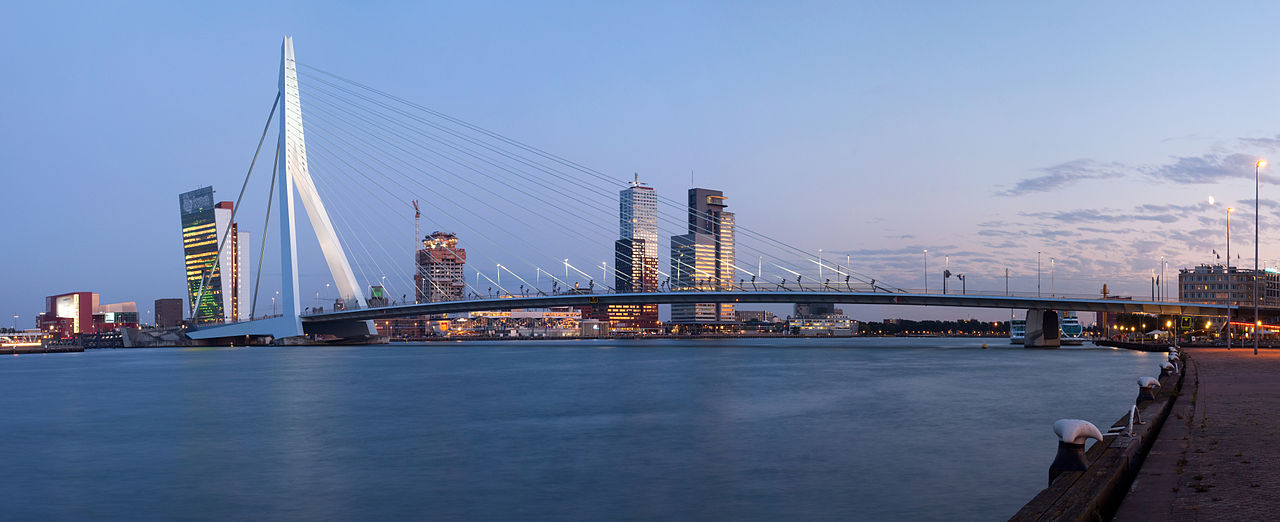
The country has a vast history, dating back earlier than the 16th century when it saw a multitude of foreign rulers including the Romans, the Germanic Franks, the French, and the Spanish. After building up a great overseas empire, the Dutch lost control of the seas to England in the 18th century, and were under French control until 1815. After remaining neutral through World War I, and being occupied by Germany in World War II, they went on after the wars to become active in West European affairs.
In 1957, the Netherlands became a founding member of the European Economic Community, now known as the European Union, and continues to be a leader in industry and commerce. Exports currently account for over 50% of the country’s GDP and include natural gas, machinery and electronic equipment, and chemicals. A highly industrialized country, it is also a major trading nation as it imports many of the materials their industries require.
With a constitutional monarchy, the Netherlands saw its Queen Beatrix abdicate the thrown in 2013 in favor of her son Prince Willem Alexander. She had served a 33-year reign.
Oxford’s Atlas of the World — the only world atlas updated annually, guaranteeing that users will find the most current geographic information — is the most authoritative resource on the market. The milestone Twentieth Edition is full of crisp, clear cartography of urban areas and virtually uninhabited landscapes around the globe, maps of cities and regions at carefully selected scales that give a striking view of the Earth’s surface, and the most up-to-date census information. The acclaimed resource is not only the best-selling volume of its size and price, but also the benchmark by which all other atlases are measured.
Subscribe to the OUPblog via email or RSS.
Subscribe to only geography articles on the OUPblog via email or RSS.
Image credit: A panorama of the Erasmus Bridge and the River Meuse in the Dutch city of Rotterdam. Photo by Massimo Catarinella. CC BY 3.0 via Wikimedia Commons.
The post Countries of the World Cup: Netherlands appeared first on OUPblog.


By: PennyF,
on 7/11/2014
Blog:
OUPblog
(
Login to Add to MyJacketFlap)
JacketFlap tags:
Books,
History,
Geography,
World,
atlas,
argentina,
Latin America,
World Cup,
Oxford Atlas of the World,
Atlas of the World,
FIFA,
Social Sciences,
*Featured,
Sports & Games,
word facts,
roman catholicism accounts,
argentina pulled,
fernández,
kirchner,
argentina’s,
Add a tag
As we gear up for the conclusion of the 2014 FIFA World Cup, we’re highlighting some interesting facts about the final four competing nations with information pulled right from the pages of the latest edition of Oxford’s Atlas of the World. Argentina and the Netherlands battled it out in a semi-final match on Wednesday 9 July; Argentina pulled through after a penalty shootout. The team will go head-to-head with Germany on Sunday, 13 July to determine the champion.
Argentina, a two-time World cup winner reached its fifth final when it defeated the Netherlands. The last time it had advanced that far was 24 years ago in 1986. To celebrate their achievement, here are a few facts to think about until then next Cup.
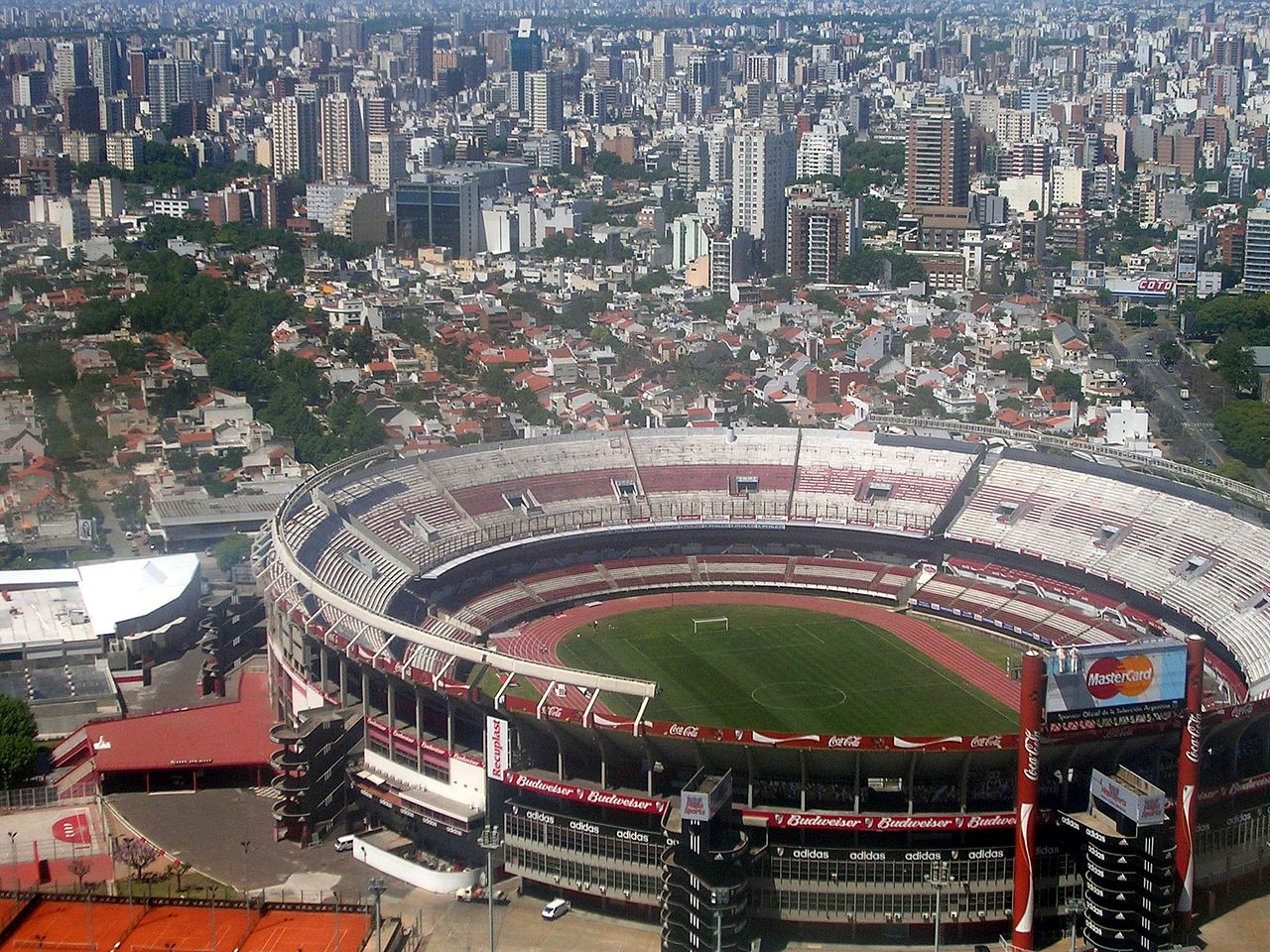
- In 2007 Cristina Fernández De Kirchner was the first directly elected woman president in Argentina. She succeeded her late husband, Néstor Carlos Kirchner, who had previously served for four years. She was later reelected in 2011.
- The country had a large indigenous population prior to European colonization; however 86% of Argentina’s population is now of European ancestry.
- Argentina is South America’s second largest nation after Brazil, and the world’s eighth largest country. It is the fourth largest Spanish-speaking nation in the world.
- Spain took control of Argentina in the 16th century and continued its reign until 1816, when the country won back its independence. Argentina later suffered from instability and periods of military rule.
- The World Bank classifies Argentina as an “upper-middle-income” developing country. Its form of currency is the Argentine Peso which is equivalent to 100 centavos.
- In 1991, Argentina, Brazil, Paraguay, and Uruguay set up an alliance, Mercosur, aimed at creating a common market. The agreement’s main purpose is to facilitate free trade.
- Roman Catholicism accounts for a whopping 92% of the country’s population (Pope Francis was born and raised there). Protestantism and Judaism tie at a distant second making up 2% each of the population.
Oxford’s Atlas of the World – the only world atlas updated annually, guaranteeing that users will find the most current geographic information — is the most authoritative resource on the market. The milestone Twentieth Edition is full of crisp, clear cartography of urban areas and virtually uninhabited landscapes around the globe, maps of cities and regions at carefully selected scales that give a striking view of the Earth’s surface, and the most up-to-date census information. The acclaimed resource is not only the best-selling volume of its size and price, but also the benchmark by which all other atlases are measured.
Subscribe to the OUPblog via email or RSS.
Subscribe to only geography articles on the OUPblog via email or RSS.
Image credit: Buenos Aires desde el cielo (Estadio de River). By Elemaki. CC BY 3.0 via Wikimedia Commons.
The post Countries of the World Cup: Argentina appeared first on OUPblog.


By: PennyF,
on 7/10/2014
Blog:
OUPblog
(
Login to Add to MyJacketFlap)
JacketFlap tags:
Books,
History,
Geography,
World,
soccer,
Brazil,
atlas,
Latin America,
World Cup,
Atlas of the World,
FIFA,
Fútbol,
*Featured,
Brasil,
Add a tag
As we gear up for the conclusion of the 2014 FIFA World Cup, we’re highlighting some interesting facts about the final four competing nations with information pulled right from the pages of the latest edition of Oxford’s Atlas of the World. If you’re one of the few who hasn’t caught onto World Cup fever, the winner of the World Cup is near! Brazil and Germany faced off on Tuesday, 8 July. The shocking game left Germany the victor, with Argentina and the Netherlands battling it out on Wednesday 9 July. Argentina pulled through after a penalty shootout. The third place finalist will be determined on Saturday, 12 July with the final two teams going head-to-head on Sunday, 13 July to determine the champion.
The Federative Republic of Brazil, also known by the spelling Brasil, the world’s fifth largest country with a population of over 199 million, has the honor and distinction of hosting the World Cup this year, a fact that had this fútbol-centric nation even more hyped than usual.
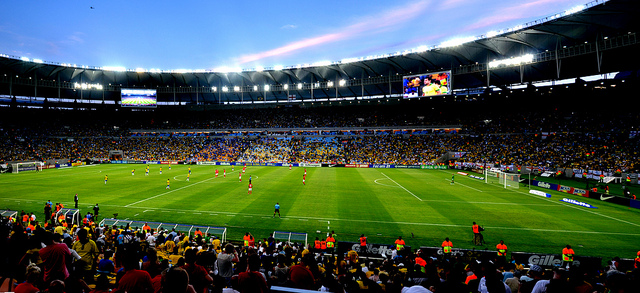
A large country of over 3 million square miles, the area contains three main regions. Manaus, one of the host cities, has high temperatures all throughout the year. A tropical climate, rainfall is normally heavy, but lucky for players and cheering fans, the weather tends to be a bit drier from June through September.
Brazil is a leading economy in South America, described as a “rapidly industrializing economy.” You might not know that is the world’s top producers of products including cars, paper, aircrafts, and even materials ranging from diamonds to tin. With coffee as it’s leading export, agriculture employs 16% of the population. A major farming nation, products also include bananas, coca, rice, sugarcane, and maize.
With the Amazon, the world’s second largest river, in its backyard, forestry is a major industry although the fear that destroying the rainforests can accelerate global warming is a real concern. On a positive environmental note, Brazil is the second highest producer of hydroelectricity in the world, accounting for 12.3% of total world production.
Politically, the nation sets an example for progress in gender equality, having elected its first female president, Dilma Rousseff of the Workers Party, in 2010. It’s government is a Federal Republic, having first declared itself an independent empire in 1822 after originally being claimed by Portugal in 1500. After periods of material rule from the 1930s, civilian rule was restored in 1985 with a new constitution adopted in 1988.
Oxford’s Atlas of the World – the only world atlas updated annually, guaranteeing that users will find the most current geographic information — is the most authoritative resource on the market. The milestone Twentieth Edition is full of crisp, clear cartography of urban areas and virtually uninhabited landscapes around the globe, maps of cities and regions at carefully selected scales that give a striking view of the Earth’s surface, and the most up-to-date census information. The acclaimed resource is not only the best-selling volume of its size and price, but also the benchmark by which all other atlases are measured.
Subscribe to the OUPblog via email or RSS.
Subscribe to only geography articles on the OUPblog via email or RSS.
Image credit: Photo by Digo_Souza>, CC BY 2.0 via Flickr
The post Countries of the World Cup: Brazil appeared first on OUPblog.


By: Alice,
on 6/18/2014
Blog:
OUPblog
(
Login to Add to MyJacketFlap)
JacketFlap tags:
Current Affairs,
brazil,
transportation,
FIFA,
*Featured,
amazônia,
Business & Economics,
stadiums,
Sports & Games,
Adam Grossman,
Developing Leaders,
High-Performance Industry,
Sports Strategist,
empty seats,
empty stadiums,
FIFA Fan Fests,
integrated place marketing strategy,
Irving Rein,
major sporting events,
marketing challenges,
World Cup 2014 Brazil,
gabriel_srsmith,
fests,
ainda,
construçao,
Books,
Add a tag
By Irving Rein and Adam Grossman
Stunning upsets. Dramatic finishes. Individual brilliance. Goals galore. The 2014 World Cup has started off with a bang. Yet, not as many people as expected are on hand to hear and see the excitement in venues throughout Brazil. Outside of the home country’s matches, there have been thousands of empty seats in stadiums throughout the tournament. Even marquee matchups, such as the Netherlands-Spain game, have failed to fill their venues. The Italian and English football associations each had 2,500 tickets allocated for their recent game. While England sold their entire allotment, Italy was reported to have returned hundreds of tickets back to FIFA.
So why is the world’s most popular sporting event playing to empty seats? Hosting the event in Brazil does create unique structural challenges that likely have and will prevent more sellouts. Because of the billions of dollars of public funds spent on the World Cup by Brazil, FIFA allocated a large number of tickets for exclusive purchase by fans from the host nation that are paying the bill. In a country where a 10-cent price increase in bus fare caused a nation-wide protest last year, paying $135-$188 dollars per match is likely too expensive for many Brazilian soccer fans.
However, the World Cup is not alone in having difficulty filling empty seats for major sporting events. For example, the National Football League (NFL) and the Southeastern Conference (SEC) are two of the most popular sports leagues in the United States. Yet, both organizations have seen declines in attendance over the past years and are spending significant resources in addressing this venue challenge. With ticket prices continually increasing and technology making it easing than ever to watch games on your television, laptop, or phone, how do sports organizations get people to come to venues?
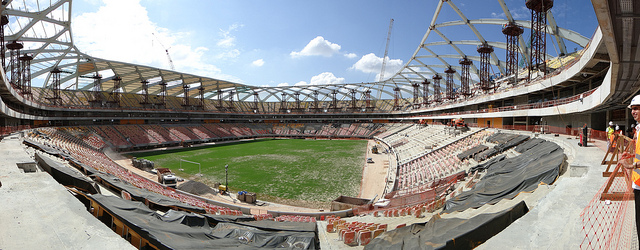
Arena da Amazônia – Amazon Arena (Quando ainda em construçao – When still under construction.) Photo by Gabriel Smith. CC BY 2.0 via gabriel_srsmith Flickr.
The 2014 World Cup in Brazil demonstrates many of these issues. One of the biggest place marketing challenges is the location of the stadiums. Both FIFA and Brazil essentially used the Field of Dreams “if you build it they will come” strategy. Brazil decided to build or renovate 12 stadiums in many different parts of the country, including venues in remote locations throughout the country. For example, the United States’ second game will be held in Manaus in the Amazonian jungle. The city can only be reached by boat or plane as no highways connect the city to the rest of Brazil.
Brazil could have focused on eight venues — the minimum required by FIFA to host a World Cup — in locations closer to metropolitan areas. We have found that many of the most successful venues already take advantage of existing infrastructure rather than depending on new development. It is likely that more people would attend World Cup matches if they did not have to rely on new roads, bridges, and rail lines to get there.
Brazil and FIFA have also suffered from the lack of an integrated place marketing strategy. The most forward thinking sports organizations have extended their footprints beyond their venues. FIFA deserves significant credit for extending the World Cup’s footprint beyond the stadiums. For example, FIFA Fan Fests in Brazil are often held on gorgeous beaches in cities where games take place. They are filled with music, television, food, and drink to celebrate the 32 days of the World Cup. This encourages fans from both inside and outside of Brazil to have a World Cup experience without having to attend the games. Millions of people are expected to attend these Fan Fests as they have done in every World Cup since 2002.
However, these place extensions work best when they also encourage people to actually attend the games. In Brazil, the Fan Fests can provide a better overall experience than going to the stadiums. Because many of the stadiums were completed only days before the World Cup started, they lack many of the amenities that are found at the Fan Fest. For example, Arena Amazonia in Manuas will only feature “restaurants and underground parking.” That hardly compares to the festive experience at a Fan Fest. Attending a Fan Fest also does not require buying a ticket or dealing with the traffic problems that occur when traveling to stadiums, and people can still see the game on large television monitors with thousands of other fans. Why attend a game when you can have a better and cheaper experience at a Fan Fest?
The World Cup in Brazil shows that thrilling competitions alone do not fill empty seats. Creating an integrated strategy requires a complete analysis of all factors that would prevent a fan from coming to a venue. This includes examining transportation, accessibility, and technology issues – and making certain that game attendance is not negatively impacted by efforts to engage fans through place extensions.
Adam Grossman is the Founder and President of Block Six Analytics (B6A). He has worked with a number of sports organizations, including the Minnesota Timberwolves, Washington Capitals, and SMG @ Solider Field, to enhance their corporate sponsorship and enterprise marketing capabilities. Irving Rein is Professor of Communication Studies at Northwestern University. He is the author of many books, including The Elusive Fan, High Visibility, and Marketing Places. He has consulted for Major League Baseball, the United States Olympic Committee, the National Aeronautics and Space Administration, and numerous corporations. They are the co-authors of The Sports Strategist: Developing Leaders for a High-Performance Industry with Ben Shields. Read previous blog posts on the sports business.
Subscribe to the OUPblog via email or RSS.
Subscribe to only business and economics articles on the OUPblog via email or RSS.
The post World Cup plays to empty seats appeared first on OUPblog.


By: DanP,
on 6/2/2014
Blog:
OUPblog
(
Login to Add to MyJacketFlap)
JacketFlap tags:
football,
History,
pelé,
soccer,
Brazil,
argentina,
Latin America,
World Cup,
odnb,
FIFA,
fifa world cup,
*Featured,
oxford dictionary of national biography,
paulo,
futebol,
Online products,
Sports & Games,
alexander hutton,
charles miller,
latin american history,
matthew brown,
online update,
museu,
santos,
Add a tag
By Matthew Brown
Charles Miller claimed to have brought the first footballs to Brazil, stepping off the boat in the port of Santos with a serious expression, his boots, balls and a copy of the FA regulations, ready to change the course of Brazilian history. There are no documents to record the event, only Miller’s own account of a conversation, in which historians have picked numerous holes. There are no images either, which is why to mark the impending Miller-mania surrounding English participation in the World Cup in Brazil, I recreated the scene on the docks at Santos, today South America’s biggest and busiest port. (Thanks to my colleague Gloria Lanci for capturing the solemnity of the occasion).
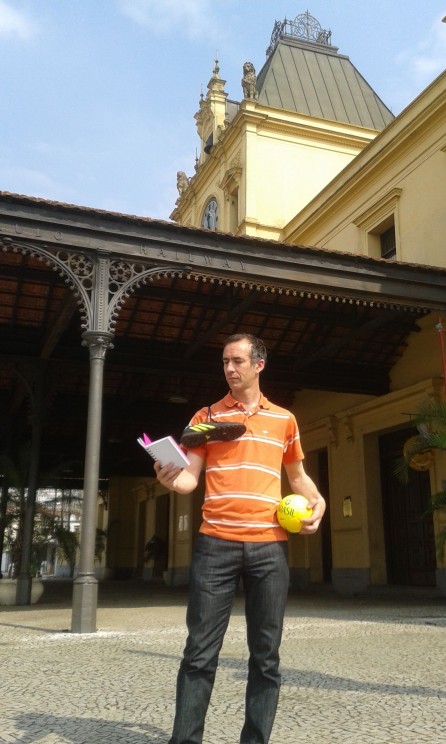
Opposite the passenger terminal, where the photo was taken, an old building is being converted into the Museu do Pelé, to house the history of Santos Futebol Clube’s most famous player, heralded by many as the greatest footballer of the twentieth century – though it will not be ready to open in time for the World Cup. The stories of Miller and Pelé are often linked to illustrate the development of football in Brazil. Gilberto Freyre, the Brazilian sociologist and historian, was one of the first:
‘[It was] Englishmen who introduced into Brazil the principal sporting and recreational replacements for our colonial jousting tournaments: horse-racing, tennis, cycling and football itself, which here became fully naturalised as a game not for fair-haired European expatriates in the tropics but for local people: […] people increasingly of varying shades of brown; with de-Anglicisation culminating in the admirable Pelé, after shining with Leônidas.
[Football] has become a veritable Afro-Brazilian dance, with footwork never imagined by its inventors. Has it stopped being British? Not in the slightest. Association football cannot be separated from its British origins to be considered a Brazilian or Afro-Brazilian invention. What it is, in its current, triumphant expression, is an Anglo-Afro-Brazilian game’. (Gilberto Freyre, The British in Brazil, London, 2011, first published in Portuguese in 1954, p.13.)
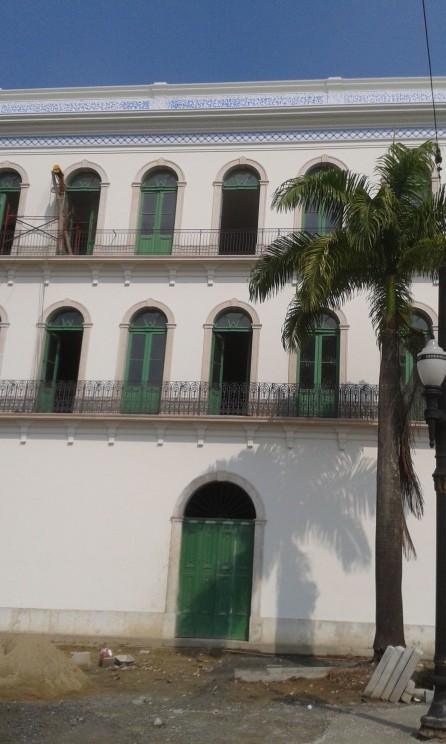
Charles Miller was born in São Paulo to a Scottish father and a Brazilian mother whose surname, Fox, reveals her English origins. During his lifetime the population of São Paulo ballooned from around 100,000 in 1874 to well over 2 million in 1953. Most of those new citizens were migrants and their children. São Paulo and Brazil were remaking themselves. Football and music became central ways for Brazilians to express a new inclusive identity after the abolition of slavery (1888) and the establishment of a new republic to replace monarchy (1889).
The sense of Brazilian football leaving its British origins behind as it headed for global domination on and off the pitch, as suggested by Freyre, is why there is no statue or plaque to Miller in the city, not even in the Praça Charles Miller, the square at the front of the Pacembu stadium which houses the Museu do Futebol. Though he was born and died in Brazil, and lived almost his entire life in Brazil (the exception was his schooling in Hampshire, England) Miller’s legend is that of an immigrant, stepping off the ship in Santos to begin a new life. His ambiguous identity, floating between Scottish, British and Brazilian might explain why his simple grave in the Cemeterio de Protestantes in São Paulo is so modest (a cross marked C.W.M, which the director of the cemetery asked me not to photograph, “out of respect”). The Museu Charles Miller, housed in the exclusive Clube Athletico Sao Paulo, and available to visit on appointment, contains old photographs, trophies and a letter from Pelé.
In Brazilian football historiography, “Charles Miller” has become a cipher for the elite, foreign origins of a game which was were subsequently embraced by the Brazilian povo (the people). Something similar is true of Alexander Watson Hutton for Argentina, a more conventional immigrant figure, a Scot who arrived in Buenos Aires as an adult and set about institutionalising and regulating the game of football through schools, teams and leagues. At the II Simpósio Internacional de Estudos Sobre Futebol that I attended in São Paulo last week, Miller was referenced by many of the researchers as a scene-setter to establish their credentials, his name alone enough to conjure images of moustachioed elite white men in blazers tapping a ball around.
At the Simposio, discussing museums and football with Richard McBrearty, director of the Scottish Football Museum, and Daniela Alfonsi, Diretora de Conteudo do Museu de Futebol, Kevin Moore, director of the [English] National Football Museum, noted that Miller’s story is ‘the very epitome of the multinational, global nature of the origins of football’. But they also pointed out that the origins of football were anything but a one man show. Hundreds of people played football in Brazil at the end of the nineteenth century, and historian José Moraes dos Santos Neto has argued pretty convincingly that football was being played in several places in Brazil before Miller’s much-heralded return from England. The ways in which Brazilians took on the game and made it their own is the subject of many wonderful books, including Alex Bellos’ Futebol: The Brazilian Way of Life and David Goldblatt’s Futebol Nation: A Footballing History of Brazil. The importance of Charles Miller lies not in any individual greatness but in the way that his story has captured something of the essence of being Brazilian, and of the ways in which football was adopted, regulated, internationalised and embraced around the world.
Dr Matthew Brown is a reader in Latin American Studies at the University of Bristol, and specialises in the history of sports in South America. In particular, the history of the very first football teams to be established. He contributed the biographies of Charles Miller and Alexander Hutton to Oxford Dictionary of National Biography’s May update.
The Oxford Dictionary of National Biography online is freely available via public libraries across the UK. Libraries offer ‘remote access’ allowing members to log-on to the complete dictionary, for free, from home (or any other computer) twenty-four hours a day. In addition to 58,800 life stories, the ODNB offers a free, twice monthly biography podcast with over 190 life stories now available. You can also sign up for Life of the Day, a topical biography delivered to your inbox, or follow @ODNB on Twitter for people in the news.
Subscribe to the OUPblog via email or RSS.
Subscribe to only history articles on the OUPblog via email or RSS.
Image credits: (1) Matthew Brown arriving in Brazil, impersonating Charles Miller, © Gloria Lanci. (2) Site of the forthcoming Museu do Pelé, © Matthew Brown.
The post Football arrives in Brazil appeared first on OUPblog.


By: Michelle,
on 11/9/2009
Blog:
OUPblog
(
Login to Add to MyJacketFlap)
JacketFlap tags:
History,
Politics,
Current Events,
Geography,
A-Featured,
A-Editor's Picks,
south africa,
World History,
atlas,
World Cup,
place of the year,
1995 Rugby World Cup,
2009 Place of the Year,
2010 World Cup,
Atlas of the World,
FIFA,
Invictus,
Nelson Mandela,
Oxford Place of the Year,
Add a tag
Michelle Rafferty, Publicity Assistant
I dare you to watch the trailer for this December’s Invictus—the story of how a newly elected Nelson Mandela used the 1995 Rugby World Cup to bring his people together—without feeling slight heart palpitation. Particularly in a scene where we see Mandela speaking with a political confidante:
“This rugby, it’s a political calculation,” she says.
“It is a human calculation,” responds Mandela.
Sounds like one awfully loaded conversation about rugby, but if there’s anything history, cinema, and Nike commercials have taught us, it’s that the game ultimately represents something much bigger than itself. From taking a stand (1980 Moscow Games boycott) and breaking social barriers (Jackie Robinson, Dara Torres) to beating odds (Nancy Kerrigan, Lance Armstrong) and growing up (Mighty Ducks 1, 2, and 3), sports are often the metaphors and inspiration of our lives. Which leads us to our big announcement… as it moves to the forefront of the global sports arena once more, we are excited to announce South Africa as Oxford’s “Place of the Year.” The 2010 World Cup—arguably the most important international event the country will host since officially becoming a post-apartheid, democratic nation only 15 years ago—signifies further transformation, quantifiable in millions of dollars worth of new infrastructure.
How much new infrastructure?
According to FIFA, contributions from the South African government total (in rands “R”):
Stadium and precinct development: R9.8 billion
Transport: R13.6 billion
Broadcast and telecommunications: R300 million
Event operations: R684 million
Safety and security: R1.3 billion
Event volunteer training: R25 million
Ports of entry infrastructure: R3. 5 billion
Immigration support: R630 million
Communications, hosting, legacy and culture: R504 million
Which translates to…
According to consulting firm Grant Thornton, which drew up the financial impact report for South Africa’s World Cup bid committee:
R55.7 billion to the South African economy
415,400 jobs
R19.3 billion in tax income to the government
The World Cup has received mixed reviews however: Economy boost or money suck? Increase in jobs or class divider? Interna









